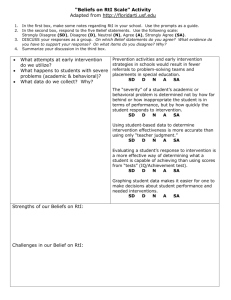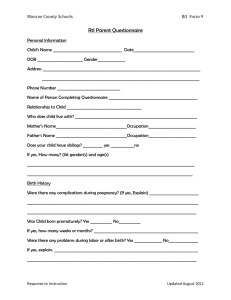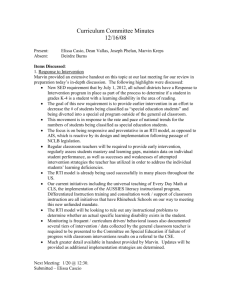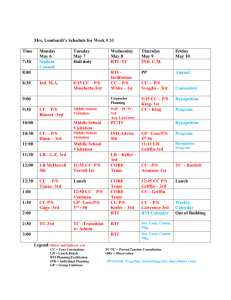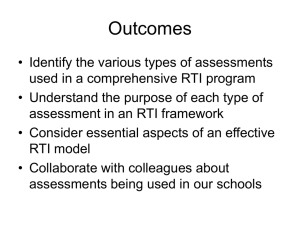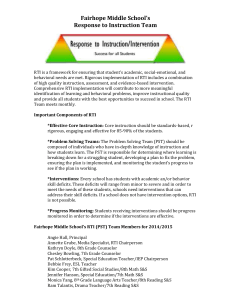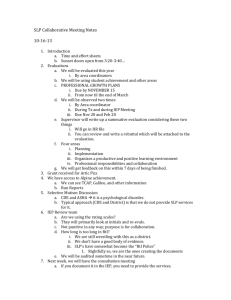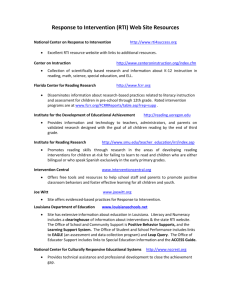10/16/14 RTI 7-12 Subcommittee Meeting Notes
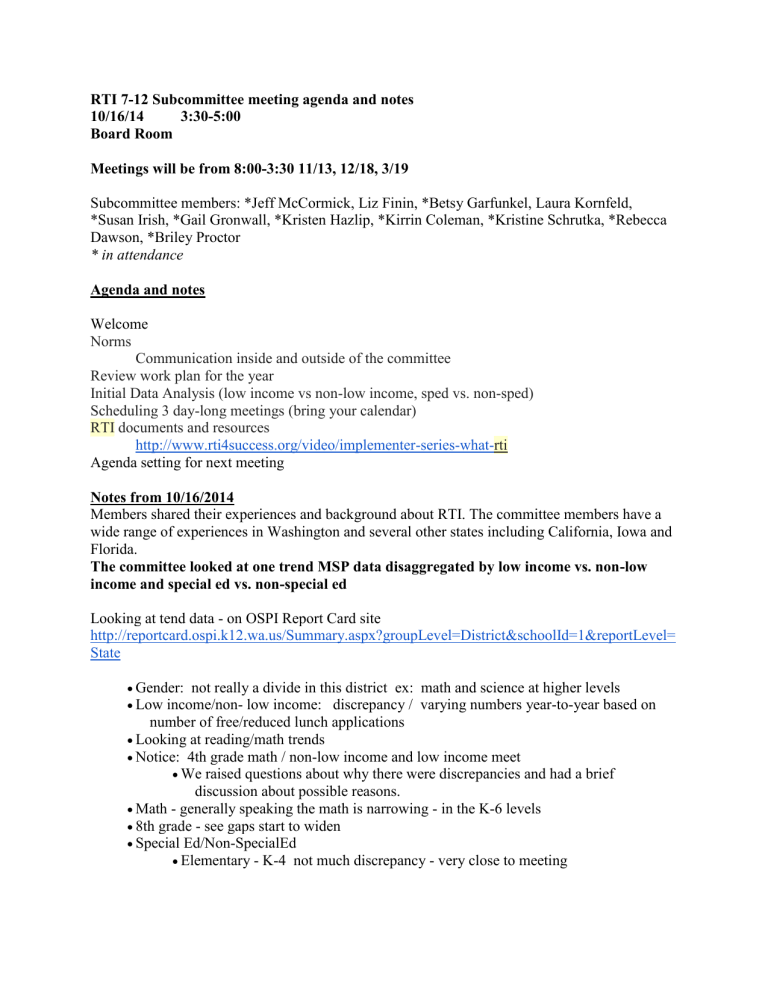
RTI 7-12 Subcommittee meeting agenda and notes
10/16/14 3:30-5:00
Board Room
Meetings will be from 8:00-3:30 11/13, 12/18, 3/19
Subcommittee members: *Jeff McCormick, Liz Finin, *Betsy Garfunkel, Laura Kornfeld,
*Susan Irish, *Gail Gronwall, *Kristen Hazlip, *Kirrin Coleman, *Kristine Schrutka, *Rebecca
Dawson, *Briley Proctor
* in attendance
Agenda and notes
Welcome
Norms
Communication inside and outside of the committee
Review work plan for the year
Initial Data Analysis (low income vs non-low income, sped vs. non-sped)
Scheduling 3 day-long meetings (bring your calendar)
RTI documents and resources http://www.rti4success.org/video/implementer-series-whatrti
Agenda setting for next meeting
Notes from 10/16/2014
Members shared their experiences and background about RTI. The committee members have a wide range of experiences in Washington and several other states including California, Iowa and
Florida.
The committee looked at one trend MSP data disaggregated by low income vs. non-low income and special ed vs. non-special ed
Looking at tend data - on OSPI Report Card site http://reportcard.ospi.k12.wa.us/Summary.aspx?groupLevel=District&schoolId=1&reportLevel=
State
Gender: not really a divide in this district ex: math and science at higher levels
Low income/non- low income: discrepancy / varying numbers year-to-year based on number of free/reduced lunch applications
Looking at reading/math trends
Notice: 4th grade math / non-low income and low income meet
We raised questions about why there were discrepancies and had a brief discussion about possible reasons.
Math - generally speaking the math is narrowing - in the K-6 levels
8th grade - see gaps start to widen
Special Ed/Non-SpecialEd
Elementary - K-4 not much discrepancy - very close to meeting
We discussed the relatively high levels of students with disabilities passing state tests and discussed the low rate of exiting students from special ed. Our district is similar, to the national average of exiting students but our students’ achievement on state tests is higher than average.
Most students with disabilities are passing the state test using the same criteria as nondisabled students.
Looking at trends for grades 5 and up - different results
As students get older, greater gap
Thinking about the RTI part of it –
It was noted that many of the students we are helping to catch up are new to our district.
Jeff will research the continuously enrolled vs. non-continuously enrolled
The gaps in achievement at higher grades might be attributed to the increased complexity of text or math concepts.
Where are the other gaps?
These are some questions we are going to have to dig into – before we can make recommendations
We then watched the Webinar
Implementer Webinar Series
National Center on Response to Intervention - http://www.rti4success.org/
* What is RTI? Vocabulary Handout with predictions/meaning/picture or example
RTI
1.
Screening a.
Focus: All Students
2.
Progress Monitoring a.
Focus: Students identified through screening as at risk for poor learning outcomes
3.
Multi-Level Prevention System (School-Wide) a.
Instructional supports are meant to be preventative b.
Three levels of prevention -- primary, secondary, tertiary c.
Primary - Focus: All students within the setting of general education classroom d.
Secondary - Focus: Students identified through screening within the setting of general education classroom or other general education location within the school
4.
Data-Based Decision Making

